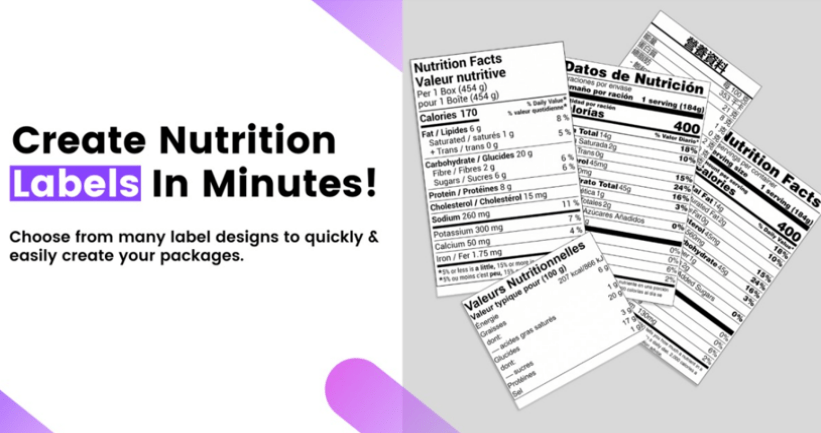One of the most crucial parts of a nutrition facts label is the ingredient statement. But how do you create a nutrition facts label? There are several different options, and you can do the nutritional analysis of your product yourself. It’s possible to use a web-based nutritional analysis software or you can hire a nutrition consultant to help you with the process. Regardless of your choice, there are several things you should know.
Ingredient statement is one the most important part of a nutrition facts label. The ingredients statement is perhaps one of the most important parts of a nutrition facts panel. Food manufacturers are required by law to list all of their ingredients, by weight, on the nutrition facts panel. For example, a tomato sauce would have tomatoes listed as its first ingredient, and spices last would have the least amount. For those with food allergies or who are simply prudent shoppers, knowing the ingredients list is essential. Foods that are labeled “healthy” must be low in fat, cholesterol, and sodium.
The serving size is another vital section of the label. The amount of each nutrient per serving is standardized and can be shown in familiar units. The metric equivalent is also available if necessary. It is important to note that serving size represents the amount of a food that a typical person consumes per eating occasion.
When choosing a food, look at the ingredient statement and the Nutrition Facts panel. While the Nutrition Facts panel should be the primary component of a food package, the ingredients list should be the next place you go. According to a survey conducted by the International Food Information Council Foundation, more than half of consumers check both of these areas before deciding what to buy. If you’re unsure about the ingredients in a particular food, cross-reference the list with the Nutrition Facts panel to get a clearer picture of the amount of each ingredient.
Web-based software allows you to do the nutritional analysis of your product. Historically, nutritionists have relied on hard copy food composition tables, population health target documents, and nutrient reference value tables to conduct their analyses. Now, nutritional analysis software has simplified the complex, time-consuming process of nutrition data collection. This software not only automates the process, but also reduces the possibility of human error. Here are some key benefits of using nutritional analysis software:
Database-based nutrition analysis is an inexpensive and fast way to conduct the analysis of your product.
Database-based programs are as accurate as those in laboratories and they also generally cost less. Some web-based nutritional analysis software, such as Nutritionist Pro™ are available as one-off packages for small businesses or yearly memberships for large food producers. These programs also allow you to use a variety of reports and generate customizable reports.
When choosing a nutrition analysis software, it’s important to compare features and pricing. Compare pricing, support options, and integrations. Look for user reviews and testimonials. These reviews will help you make an informed decision. You’ll be able to determine which programs are right for you based on their price and features. Moreover, the features that address your overall fitness may be important to you.
Cost of hiring a consultant to create a compliant nutrition facts label.
If you are considering developing your own nutritional facts label, you’ve probably wondered about the costs involved. You can probably do the calculations yourself for free if you’re comfortable with math. There are also numerous consultants, who specialize in food nutritional labeling. If you’re unsure of how to go about the process, hiring a consultant is a great option.
Hiring a consultant to create a nutrition facts label will cost you some money. While it is certainly possible to create a compliant nutrition fact label yourself, it’s also possible to buy the software yourself. You can find compliant nutrition software for many different price points. The software usually also comes with many layouts for the nutrition facts panel and includes allergen statements.
As always ask lots of questions when you are thinking about how to create a food label, connect with the company you want to work with don’t forget to try out a trial if you are considering a web-based application. If you have any questions reach out to us for more information.
